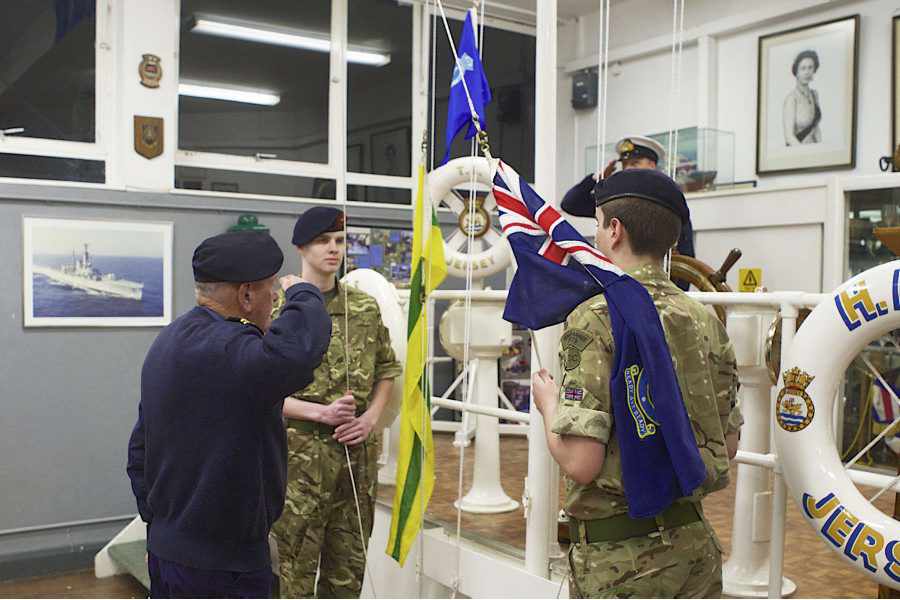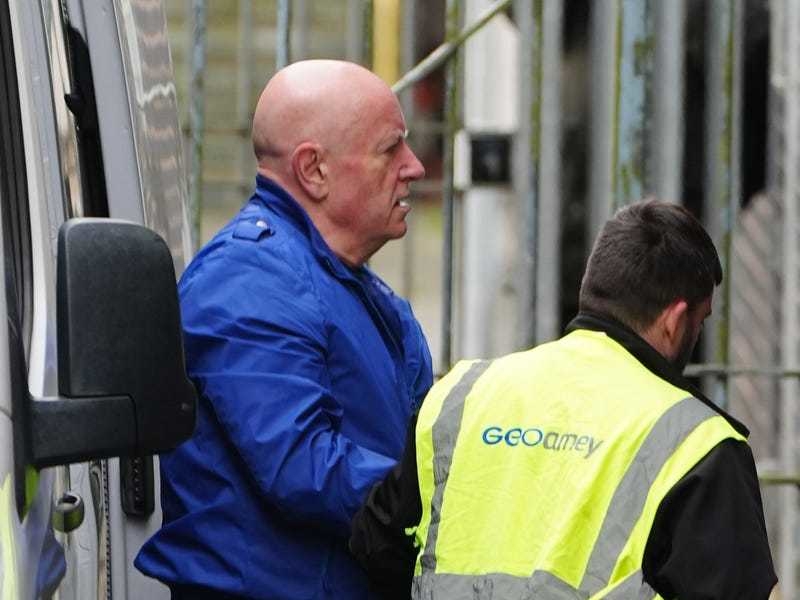But unless you have a child in the Sea Cadets or once wore the dark uniform yourself, you may be under the impression that parading before visiting Royalty or supporting Liberation Day celebrations is where the organisation’s duties end.
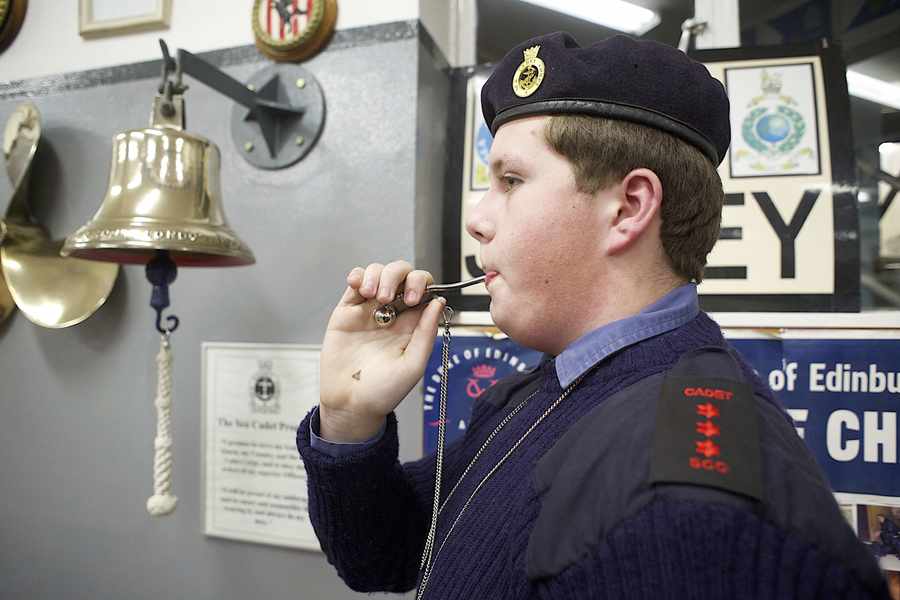
- The unit receives £10,000 a year from the States, which accounts for 40 per cent of the groups annual running costs of £25,000.
- TS Jersey is included in the Sea Cadets Southern Area and is one of 70 units in the region.
- Since 1956 the unit has ranked in the top ten per cent of units in the Southern Area each year after assessment.
- TS Jersey has won the Stephenson Trophy the award given to each areas best unit 15 times.
- The best units go on to compete against other UK units for the Canada Trophy, which Jersey has won twice.
- TS Jersey meets regularly on Sundays and Wednesdays.
- Cadets can also study towards a B-Tech diploma in public service or music with the unit. The qualification is the equivalent of four C-grade GCSEs.[/breakout]
In fact, the Sea Cadets work all the year round to offer young Islanders the chance to develop a broad range of skills designed to develop confidence and leadership as well as a sense of social responsibility.
The unit meets twice a week at its Fort Regent headquarters, where tutors deliver classes and activities.
They also help with fundraising events at different times in the year.
For nearly two decades the group has been waiting for new premises after the States gave £600,000 in 1996 to help find or build a new Sea Cadets headquarters.
But earlier this year a new set of plans – to build a maritime hub that included a place for the unit on land beneath Mount Bingham – were withdrawn following a public outcry over the inclusion of harbour-side residential units.
Owner of the Fresh Fish Company Vicky Boarder led the protests, which included a petition against the development.
In the wake of the controversy, it was suggested that the Sea Cadets share with the Jersey Field Squadron – but Major Nick Spratley said that the centre was too busy to accommodate anyone else.
For now, the group, which operates as Training Ship Jersey, will carry on at Fort Regent while new plans are considered by the States.
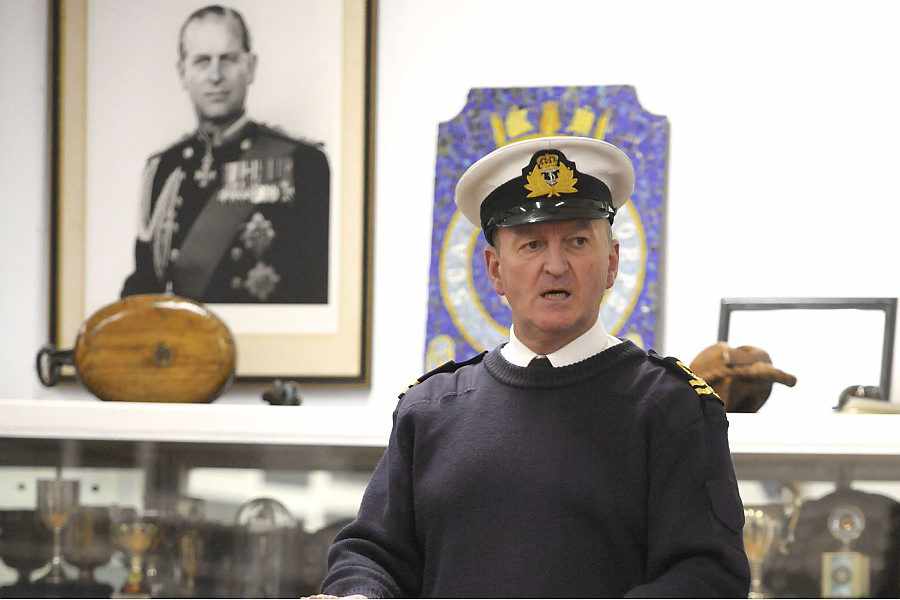
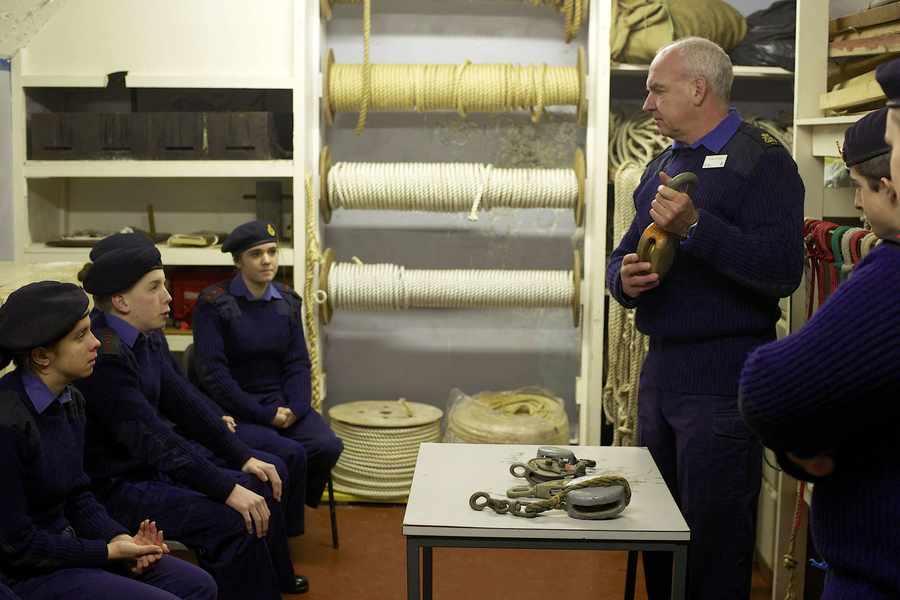
What exactly do the Sea Cadets do?
COMMANDING officer Lieutenant André Bonjour has risen through the unit’s ranks to lead the Sea Cadets, first joining in 1971 at the age of 12.
He said that the unit aimed to give young people the best possible start in life through nautical adventure and fun, based on the traditions and disciplines of the Royal Navy.
‘There are just under 400 Sea Cadet units across Britain, which contain in total about 14,000 cadets,’ Lt Bonjour said. ‘We’ve got 66 cadets on our books, but our numbers come in cycles – two years ago we were up to 90.’
There are six ranks for cadets to attain through the cadet training programme, with each rank comprising 48 training modules.
Lt Bonjour, a retired police officer, said: ‘The modules cover various things. There are water-based modules, drill modules and Sea Cadet knowledge modules. There are also five core values taught – respect, loyalty, commitment, self-discipline and honesty and integrity.
‘There are also community and volunteer modules, and as cadets progress we look for them to take up community opportunities as well, so it’s really about teaching them about being good members of society.
‘We also teach seamanship and first aid, and there is a programme of recreational activities as well.’
Islanders can join the unit’s Junior Cadets section at the age of ten, with the main programme running for children aged between 12 and 18. There is also a Royal Marine Cadet unit that offers a slightly different régime for children from the age of 13.
Cadets can also specialise in certain areas such as communication and information systems, catering and navigation, while paddle-boarding, sailing, meteorology, music, shooting and diving can all also be learned as proficiency subjects within TS Jersey.
Each Sea Cadet meeting begins and ends with a formal parade ceremony inspired by the Royal Navy’s ensign-raising protocols, before the cadets split up to train.
‘We participate in a number of public events throughout the course of the year, and cadets also help with different fundraising events,’ Lt Bonjour added. ‘Once a year we have a round-the-Island charity gun pull where cadets pull a field gun 28 miles. We’ve been doing that for 25 years and normally raise £2,000. Last year we raised nearly £4,000.’
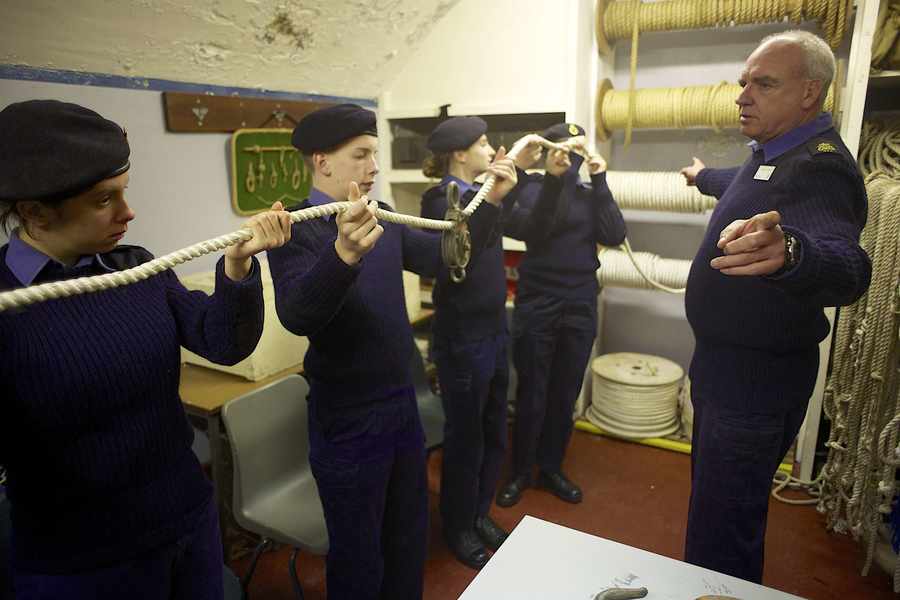
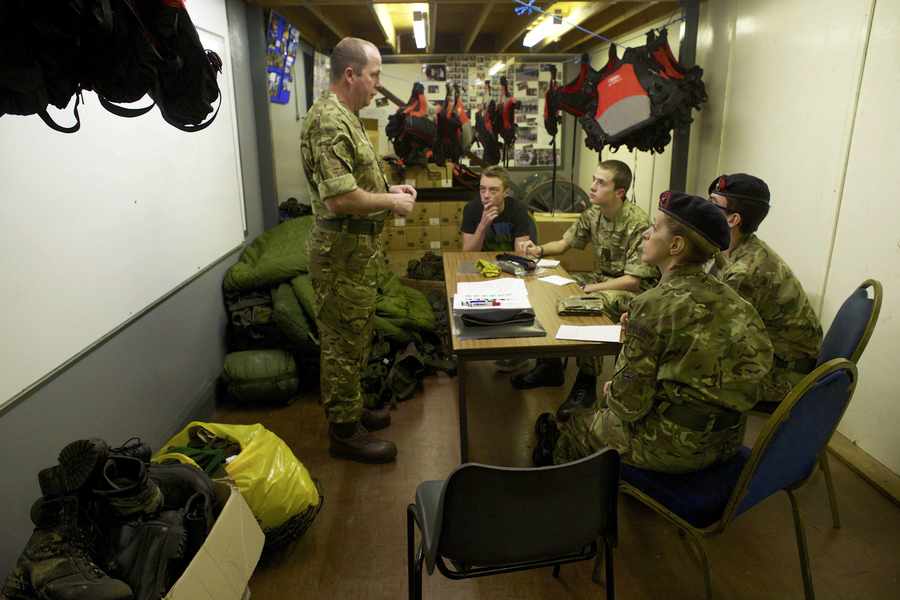
The history of the Sea Cadets:
THE national Sea Cadet movement evolved following the Crimean War when sailors set up Naval Lads’ Brigades to help children who were orphaned by the conflict.
After the first brigade was set up in Whitstable in 1854, the groups received formal recognition from Queen Victoria in 1899 when she presented the Windsor unit with £10 for uniforms. By the time the Second World War began there were 100 units operating in the UK, with 10,000 cadets learning seafaring skills. With hundreds going on to active duty, the Admiralty took over Sea Cadet training and the name Sea Cadet Corps was formally adopted, with King George VI serving as Admiral.
Jersey’s unit was formalised in 1949, and although the values promoted by the organisation remain largely unchanged, the progress of technology had allowed a much greater set of skills to be taught.
The unit has always been based at Fort Regent, but moved to its current location within the site as the leisure centre expanded in the 1970s.
Lt Bonjour said: ‘I joined in 1971 as a 12-year-old. Technology has changed so much and there are things we do now that we couldn’t back then. Our unit has uniformed staff, civilian instructors and non-uniformed helpers. We have had parents come along to say how much they have seen their child’s confidence grow and how much they have learned.
‘I’ve seen a lot of cadets come through over the years and the vast majority go on to become worthy members of the community. They’ve gone on to become police, fire and rescue and ambulance workers and we’ve got a couple of doctors here who started as Sea Cadets.’
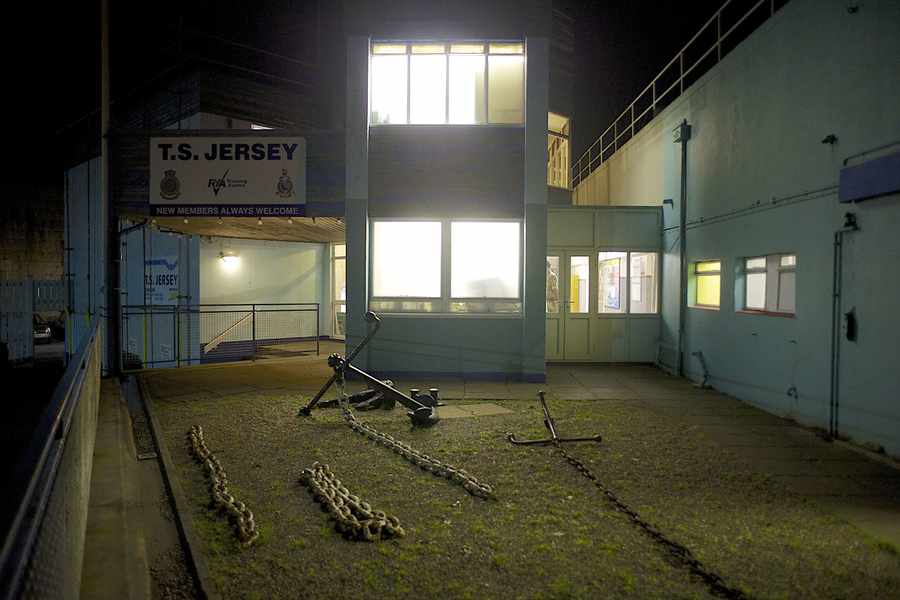
The Port Galots controversy:
THE row over plans to rehouse the Sea Cadets erupted before Christmas when proposals were put forward to develop land known as Les Galots, below Mount Bingham.
It was suggested that a maritime hub be created at the site to provide the group with a new headquarters as well as other facilities for sea-based activities.
However, traders in the area and other users began to campaign against the project, which the States said was to be paid for by developing a complex of 18 flats at the site.
Eventually the plans were withdrawn, but new discussions are currently being held over how and where the Sea Cadets can be rehomed.
Lt Bonjour, who said that being Commanding Officer for the unit took up a significant amount of his time, added: ‘We have been here since 1971, which is just over 44 years. At the time it would have been ideal to have a brand spanking new unit. We’ve got seven underground chambers that all have water ingress, it costs a fortune to heat if you get a very cold winter, and it’s very damp. It’s a typical sold concrete building with a flat roof.
‘We have a £10,000 annual grant from the States through the Home Affairs Department, which is fantastic, but everything else we have to beg and borrow from charitable organisations and financial institutions.
‘We also get some assistance from the Ministry of Defence, who supply us with uniforms.
‘The Sea Cadets is about a commitment to the youth of the Island. We’ve got a tremendous reputation, not just in the Island, but externally as well. Ideally our headquarters would be as close to water as possible, so that we can get straight into the sea.’
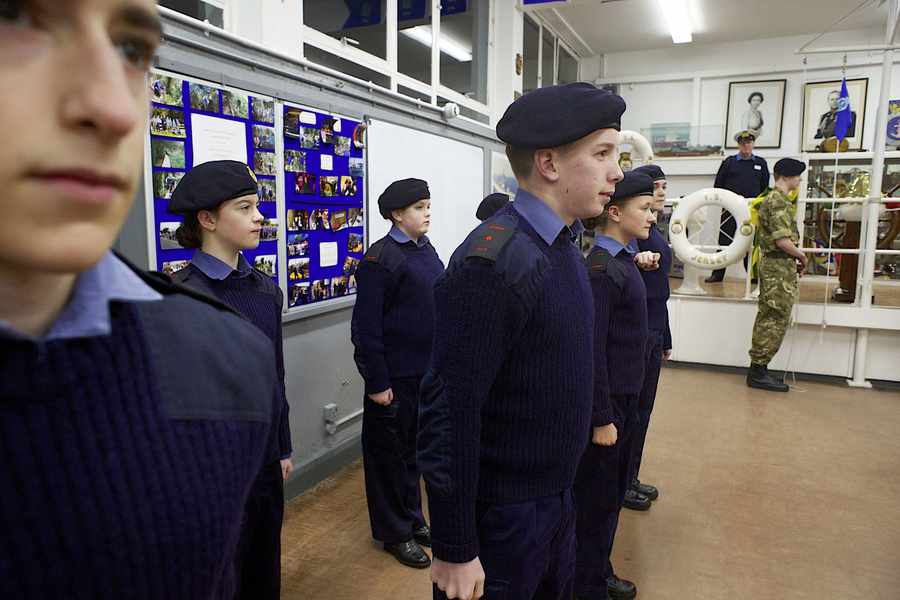
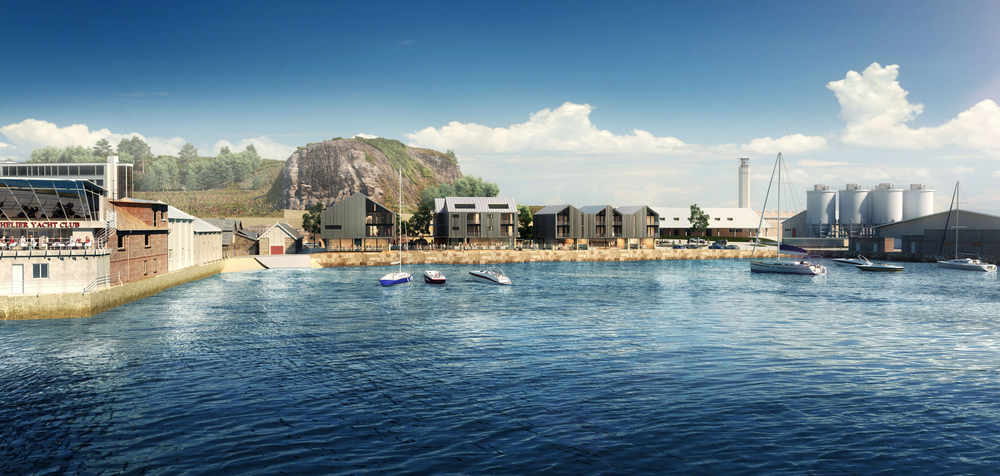
- 1996 the Sea Cadets are granted £600,000 by the States as seed money for a new headquarters.
- 2000 although planning permission has been granted for scheme to rehouse the Sea Cadets funding cannot be secured and the project is abandoned.
- 2013 rumours of a new harbour-side community development begin to emerge.
- Early 2014 talks are held with groups and stakeholders based near the Victoria Pier about a major development
- November 2014 plans for the Port Galots project are unveiled, but a major campaign against the scheme is launched.
- December 2014 the Planning Department reveals that the Port Galots application is the most commented on application in the departments history. Many of the comments are objections being registered through a petition, which eventually gains around 5,000 signatures.
- January 2015 Port Galots plans are withdrawn and politicians confirm that the Les Galots area will not be considered for residential development, but still remains a viable site for the Sea Cadets. At the first States sitting of the year Transport Minister Eddie Noel tells the Chamber that just £107,000 of the States initial £600,000 grant is left, with most of the money having been spent on professional fees for unrealised projects.[/breakout]
EVEN before the recent revelations in the States that £500,000 of taxpayers’ money had, as one Member put it, been ‘frittered away’ on failed plans to build a new home for the Sea Cadets, there has been a growing feeling that the Port Galots scheme stinks.
Although the aesthetics of the scheme and the impact the proposed flats and cadet HQ would have on the St Helier skyline have been controversial enough, what has been happening behind the scenes may be of far greater concern.
The unfolding story has all the hallmarks of a scandal for which someone must be held accountable.
It is starting to look like a remake of the Knights of Impossingworth film fiasco. In the latter case, £200,000 of public money was handed over for pre-production work.
To date, the film has not been made and Islanders have got precious little to show for their investment.
What is more, no one – neither politician nor civil servant – seems to have taken responsibility for the mess.
Alleged failings associated with the Port Galots scheme may result in the deeply unpopular development overshadowing the disaster movie. As Deputies Jackie Hilton and Mike Higgins said in the States yesterday, there are too many unanswered questions.
When are those who have the power to sign off the use of public money – and those entrusted to spend it – going to realise that they are accountable to taxpayers and have a duty to explain their actions?
If people in government and the public sector – as well as the men linked to the Port Galots scheme including Andy Le Seelleur and former Harbourmasters Brian Nibbs and Howard Le Cornu – are to stop suspicions that this was a rather cosy deal by those with privileged access to the corridors of power gaining traction, they need to start providing answers.
Transport Minister Eddie Noel might have insisted in the States yesterday that the £500,000 spent had not been ‘for nothing’. The trouble is, the evidence seems to suggest otherwise.
The public has got nothing for that money apart from yet more scepticism about the way this Island is run. As government grows through an expanding civil service, arms-length organisations and quangos, the emphasis on due diligence must not be diluted.
The taxpaying public need answers before there is little alternative but to incur the additional expense of asking the Comptroller and Auditor General, Karen McConnell, to shine some light on the matter.


